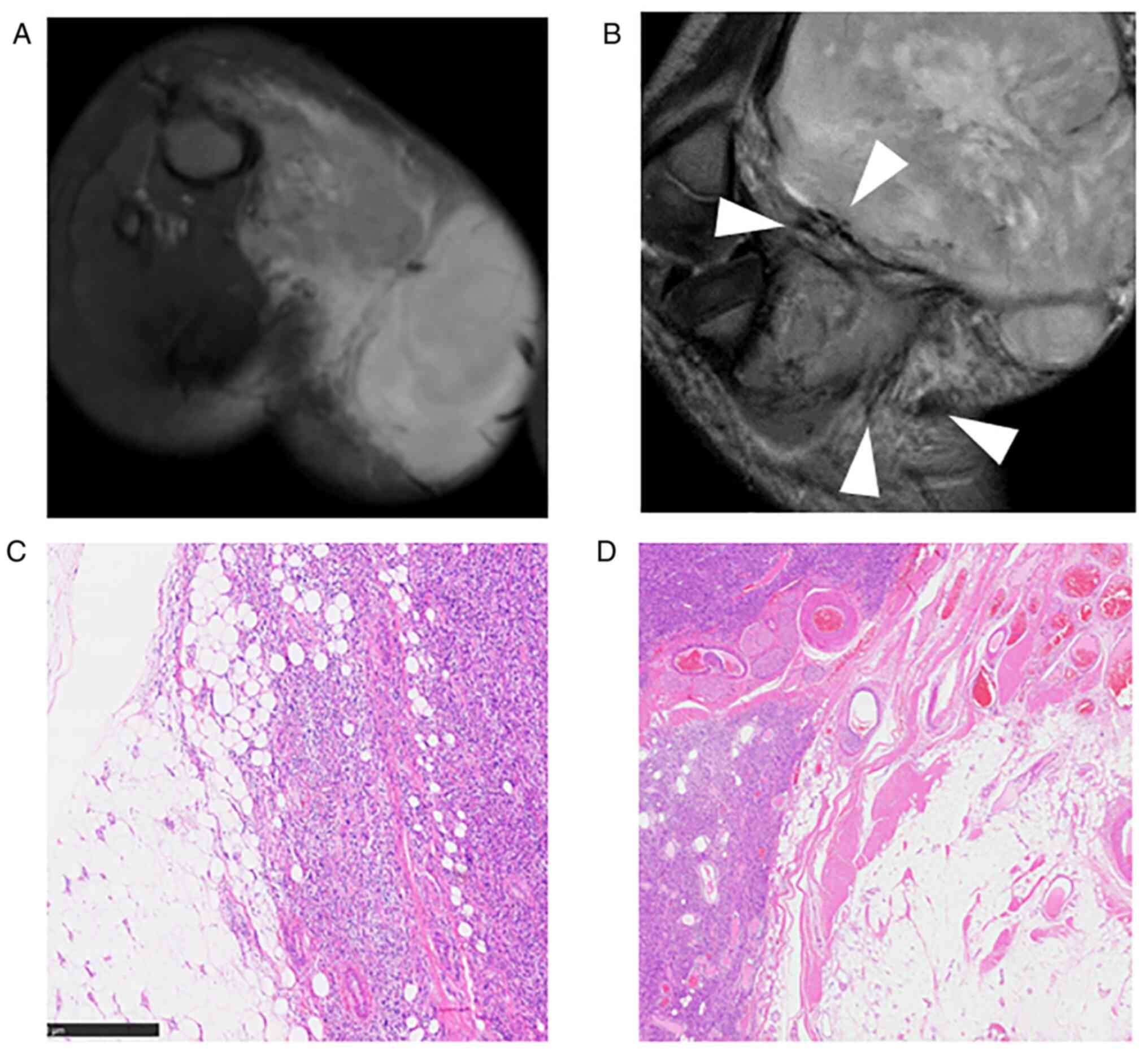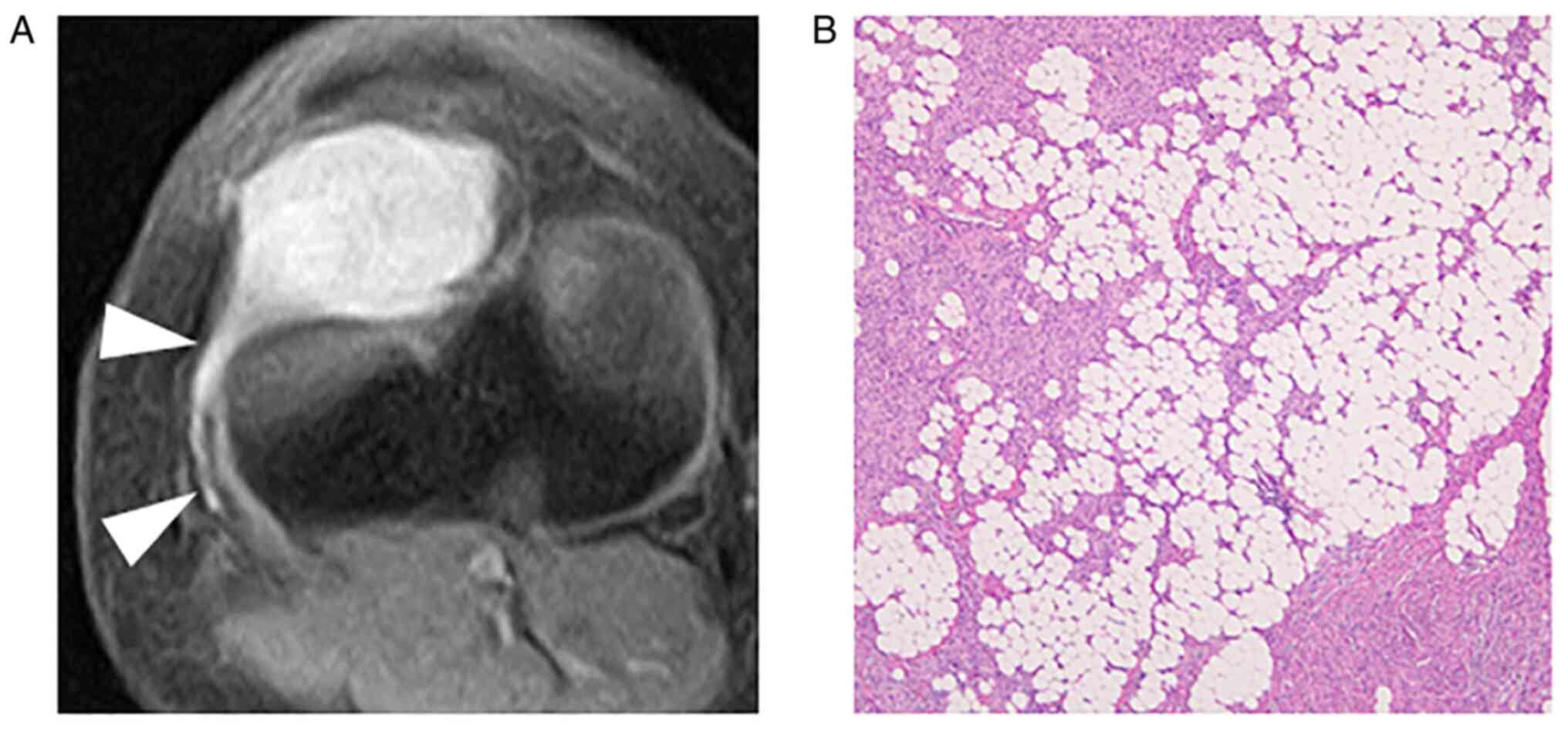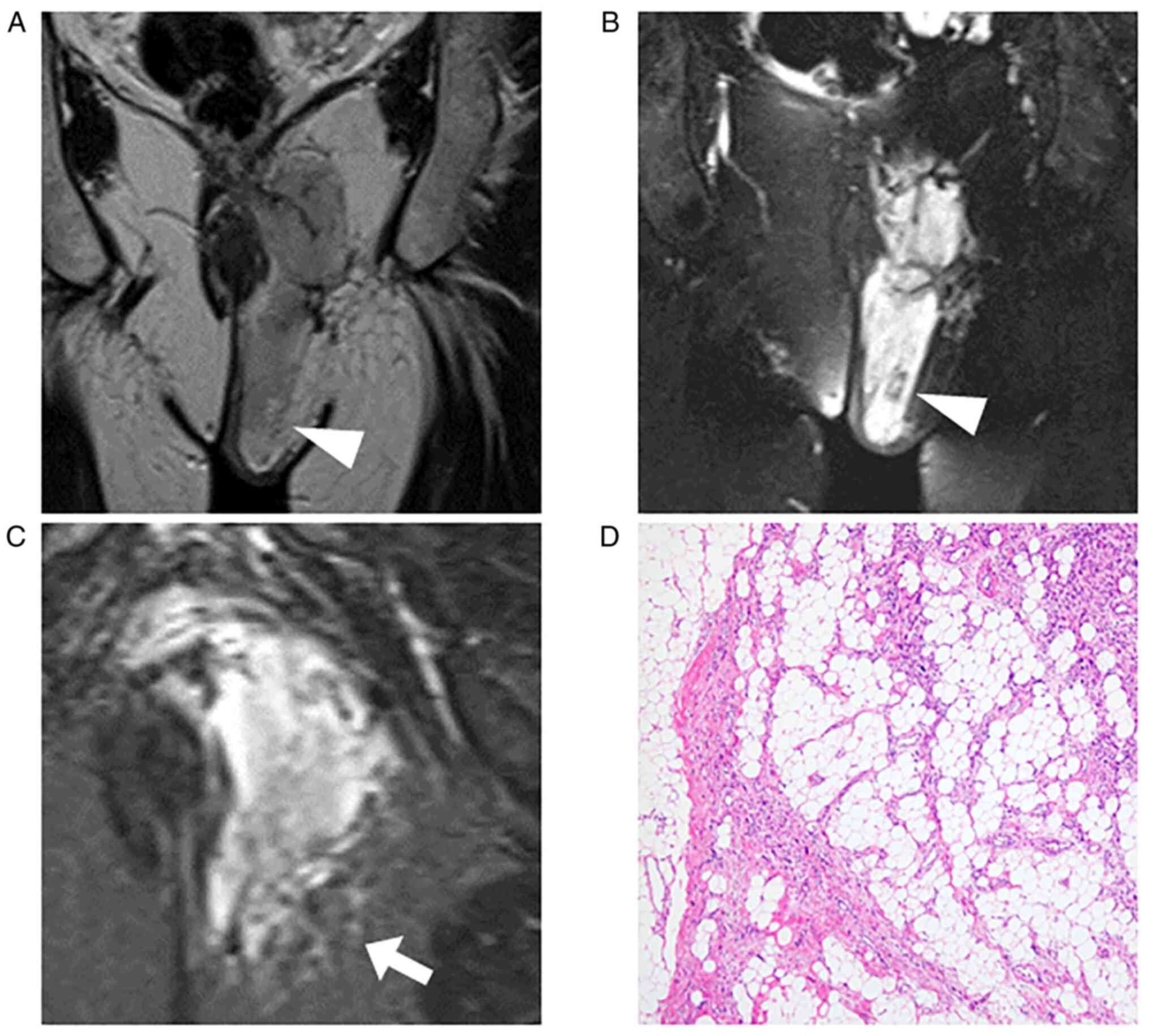|
1
|
WHO Classification of Tumours Editorial
Board: Soft Tissue and Bone Tumours: WHO Classification of Tumors.
5th edition. IARC Press, Lyon, pp403-409, 2020.
|
|
2
|
Suurmeijer AJ, Dickson BC, Swanson D,
Zhang L, Sung YS, Huang HY, Fletcher CD and Antonescu CR: The
histologic spectrum of soft tissue spindle cell tumors with NTRK3
gene rearrangements. Genes Chromosomes Cancer. 58:739–746.
2019.PubMed/NCBI View Article : Google Scholar
|
|
3
|
Baranov E and Hornick JL: Soft tissue
special issue: Fibroblastic and myofibroblastic neoplasms of the
head and neck. Head Neck Pathol. 14:43–58. 2020.PubMed/NCBI View Article : Google Scholar
|
|
4
|
Agaram NP, Zhang L, Sung YS, Chen CL,
Chung CT, Antonescu CR and Fletcher CD: Recurrent NTRK1 gene
fusions define a novel subset of locally aggressive
lipofibromatosis-like neural tumors. Am J Surg Pathol.
40:1407–1416. 2016.PubMed/NCBI View Article : Google Scholar
|
|
5
|
Solomon JP, Linkov I, Rosado A, Mullaney
K, Rosen EY, Frosina D, Jungbluth AA, Zehir A, Benayed R, Drilon A,
et al: NTRK fusion detection across multiple assays and 33,997
cases: Diagnostic implications and pitfalls. Mod Pathol. 33:38–46.
2020.PubMed/NCBI View Article : Google Scholar
|
|
6
|
Cocco E, Scaltriti M and Drilon A: NTRK
fusion-positive cancers and TRK inhibitor therapy. Nat Rev Clin
Oncol. 15:731–747. 2018.PubMed/NCBI View Article : Google Scholar
|
|
7
|
Nakamura T, Matsumine A, Matsubara T,
Asanuma K, Yada Y, Hagi T and Sudo A: Infiltrative tumor growth
patterns on magnetic resonance imaging associated with systemic
inflammation and oncological outcome in patients with high-grade
soft-tissue sarcoma. PLoS One. 12(e0181787)2017.PubMed/NCBI View Article : Google Scholar
|
|
8
|
Takamiya A, Ishibashi Y, Makise N, Hirata
M, Ushiku T, Tanaka S and Kobayashi H: Imaging characteristics of
NTRK-rearranged spindle cell neoplasm of the soft tissue: A case
report. J Orthop Sci. S0949-2658(00367-5)2022.PubMed/NCBI View Article : Google Scholar : (Epub ahead of
print).
|
|
9
|
Overfield CJ, Edgar MA, Wessell DE, Wilke
BK and Garner HW: NTRK-rearranged spindle cell neoplasm of the
lower extremity: Radiologic-pathologic correlation. Skeletal
Radiol. 51:1707–1713. 2022.PubMed/NCBI View Article : Google Scholar
|
|
10
|
McCarville MB, Muzzafar S, Kao SC, Coffin
CM, Parham DM, Anderson JR and Spunt SL: Imaging features of
alveolar soft-part sarcoma: A report from children's oncology group
study ARST0332. AJR Am J Roentgenol. 203:1345–1352. 2014.PubMed/NCBI View Article : Google Scholar
|
|
11
|
Crombé A, Brisse HJ, Ledoux P,
Haddag-Miliani L, Bouhamama A, Taieb S, Le Loarer F and Kind M:
Alveolar soft-part sarcoma: Can MRI help discriminating from other
soft-tissue tumors? A study of the French Sarcoma Group. Eur
Radiol. 29:3170–3182. 2019.PubMed/NCBI View Article : Google Scholar
|
|
12
|
Haller F, Knopf J, Ackermann A, Bieg M,
Kleinheinz K, Schlesner M, Moskalev EA, Will R, Satir AA,
Abdelmagid IE, et al: Paediatric and adult soft tissue sarcomas
with NTRK1 gene fusions: A subset of spindle cell sarcomas unified
by a prominent myopericytic/haemangiopericytic pattern. J Pathol.
238:700–710. 2016.PubMed/NCBI View Article : Google Scholar
|
|
13
|
Garcia-Bennett J, Olivé CS, Rivas A,
Domínguez-Oronoz R and Huguet P: Soft tissue solitary fibrous
tumor. Imaging findings in a series of nine cases. Skelet Radiol.
41:1427–1433. 2012.PubMed/NCBI View Article : Google Scholar
|
|
14
|
Wignall OJ, Moskovic EC, Thway K and
Thomas JM: Solitary fibrous tumors of the soft tissues: Review of
the imaging and clinical features with histopathologic correlation.
AJR Am J Roentgenol. 195:W55–W62. 2010.PubMed/NCBI View Article : Google Scholar
|
|
15
|
Kao YC, Suurmeijer AJH, Argani P, Dickson
BC, Zhang L, Sung YS, Agaram NP, Fletcher CDM and Antonescu CR:
Soft tissue tumors characterized by a wide spectrum of kinase
fusions share a lipofibromatosis-like neural tumor pattern. Genes
Chromosomes Cancer. 59:575–583. 2020.PubMed/NCBI View Article : Google Scholar
|
|
16
|
Doyle LA, Vivero M, Fletcher CD, Mertens F
and Hornick JL: Nuclear expression of STAT6 distinguishes solitary
fibrous tumor from histologic mimics. Mod Pathol. 27:390–395.
2014.PubMed/NCBI View Article : Google Scholar
|
|
17
|
Suurmeijer AJH, Dickson BC, Swanson D,
Zhang L, Sung YS, Cotzia P, Fletcher CDM and Antonescu CR: A novel
group of spindle cell tumors defined by S100 and CD34 co-expression
shows recurrent fusions involving RAF1, BRAF, and NTRK1/2 genes.
Genes Chromosomes Cancer. 57:611–621. 2018.PubMed/NCBI View Article : Google Scholar
|
|
18
|
Gustafson P, Akerman M, Alvegård TA,
Coindre JM, Fletcher CD, Rydholm A and Willén H: Prognostic
information in soft tissue sarcoma using tumour size, vascular
invasion and microscopic tumour necrosis-the SIN-system. Eur J
Cancer. 39:1568–1576. 2003.PubMed/NCBI View Article : Google Scholar
|
|
19
|
DuBois SG, Laetsch TW, Federman N, Turpin
BK, Albert CM, Nagasubramanian R, Anderson ME, Davis JL, Qamoos HE,
Reynolds ME, et al: The use of neoadjuvant larotrectinib in the
management of children with locally advanced TRK fusion sarcomas.
Cancer. 124:4241–4247. 2018.PubMed/NCBI View Article : Google Scholar
|



















